L-Glutamic acid,5-hydrazide
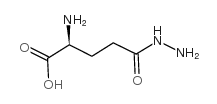
L-Glutamic acid,5-hydrazide structure
|
Common Name | L-Glutamic acid,5-hydrazide | ||
|---|---|---|---|---|
| CAS Number | 1820-73-1 | Molecular Weight | 161.15900 | |
| Density | 1.35g/cm3 | Boiling Point | 478.1ºC at 760 mmHg | |
| Molecular Formula | C5H11N3O3 | Melting Point | N/A | |
| MSDS | N/A | Flash Point | 243ºC | |
| Name | L-GLUTAMIC ACID γ-HYDRAZIDE |
|---|---|
| Synonym | More Synonyms |
| Density | 1.35g/cm3 |
|---|---|
| Boiling Point | 478.1ºC at 760 mmHg |
| Molecular Formula | C5H11N3O3 |
| Molecular Weight | 161.15900 |
| Flash Point | 243ºC |
| Exact Mass | 161.08000 |
| PSA | 118.44000 |
| Vapour Pressure | 1.85E-10mmHg at 25°C |
| Index of Refraction | 1.539 |
|
Section 1. Chemical Product and Company Identification L-Glutamic acid gamma-hydrazide Common Name/ Trade Name Manufacturer Commercial Name(s) Synonym
Chemical Name Chemical Family L-Glutamic acid gamma-hydrazide Section 4. First Aid Measures Eye ContactCheck for and remove any contact lenses. In case of contact, immediately flush eyes with plenty of water for at least 15 minutes. Get medical attention if irritation occurs. Skin ContactWash with soap and water. Cover the irritated skin with an emollient. Get medical attention if irritation develops. Serious Skin ContactNot available. InhalationIf inhaled, remove to fresh air. If not breathing, give artificial respiration. If breathing is difficult, give oxygen. Get medical attention. Serious InhalationNot available. IngestionDo NOT induce vomiting unless directed to do so by medical personnel. Never give anything by mouth to an unconscious person. If large quantities of this material are swallowed, call a physician immediately. Loosen tight clothing such as a collar, tie, belt or waistband. Serious IngestionNot available. Section 5. Fire and Explosion Data Flammability of the Product May be combustible at high temperature. Auto-Ignition Temperature Not available. Flash PointsNot available. Flammable LimitsNot available. Products of CombustionThese products are carbon oxides (CO, CO2), nitrogen oxides (NO, NO2...). Fire Hazards in Presence of Slightly flammable to flammable in presence of heat. Various Substances Explosion Hazards in Presence Risks of explosion of the product in presence of mechanical impact: Not available. Risks of explosion of the product in presence of static discharge: Not available. of Various Substances SMALL FIRE: Use DRY chemical powder. Fire Fighting Media and InstructionsLARGE FIRE: Use water spray, fog or foam. Do not use water jet. As with most organic solids, fire is possible at elevated temperatures Special Remarks on Fire Hazards Special Remarks on Explosion Not available. Hazards Section 6. Accidental Release Measures Small SpillUse appropriate tools to put the spilled solid in a convenient waste disposal container. Finish cleaning by spreading water on the contaminated surface and dispose of according to local and regional authority requirements. Large SpillUse a shovel to put the material into a convenient waste disposal container. Finish cleaning by spreading water on the contaminated surface and allow to evacuate through the sanitary system. L-Glutamic acid gamma-hydrazide Section 7. Handling and Storage PrecautionsKeep away from heat. Keep away from sources of ignition. Ground all equipment containing material. Do not breathe dust. StorageKeep container tightly closed. Keep container in a cool, well-ventilated area. Freeze Section 8. Exposure Controls/Personal Protection Engineering ControlsUse process enclosures, local exhaust ventilation, or other engineering controls to keep airborne levels below recommended exposure limits. If user operations generate dust, fume or mist, use ventilation to keep exposure to airborne contaminants below the exposure limit. Personal Protection Safety glasses. Lab coat. Dust respirator. Be sure to use an approved/certified respirator or equivalent. Gloves. Personal Protection in Case of Splash goggles. Full suit. Dust respirator. Boots. Gloves. A self contained breathing apparatus should be used a Large Spillto avoid inhalation of the product. Suggested protective clothing might not be sufficient; consult a specialist BEFORE handling this product. Exposure LimitsNot available. Section 9. Physical and Chemical Properties Physical state and appearance Solid.OdorNot available. TasteNot available. Molecular Weight161.16 g/mole ColorNot available. pH (1% soln/water)Not available. Boiling PointNot available. Melting PointNot available. Critical TemperatureNot available. Not available. Specific Gravity Vapor PressureNot applicable. Vapor DensityNot available. VolatilityNot available. Odor ThresholdNot available. Not available. Water/Oil Dist. Coeff. Ionicity (in Water)Not available. Not available. Dispersion Properties SolubilityNot available. Section 10. Stability and Reactivity Data StabilityThe product is stable. Not available. Instability Temperature Conditions of InstabilityExess heat, incompatible materials Incompatibility with variousNot available. substances CorrosivityNot available. L-Glutamic acid gamma-hydrazide Special Remarks onNot available. Reactivity Special Remarks onNot available. Corrosivity PolymerizationWill not occur. Section 11. Toxicological Information Routes of EntryInhalation. Ingestion. Toxicity to AnimalsLD50: Not available. LC50: Not available. Chronic Effects on Humans Not available. Other Toxic Effects onSlightly hazardous in case of skin contact (irritant), of ingestion, of inhalation. Humans Special Remarks onNot available. Toxicity to Animals Special Remarks on Not available. Chronic Effects on Humans Special Remarks on otherAcute Potential Health Effects: Toxic Effects on HumansSkin: May cause skin irritation. Eyes: Dust may cause eye irritation. Inhalation: Dust may cause respiratory tract irritation. Ingestion: Expected to be a low hazard for ingestion Section 12. Ecological Information EcotoxicityNot available. BOD5 and CODNot available. Products of BiodegradationPossibly hazardous short term degradation products are not likely. However, long term degradation products may arise. Toxicity of the ProductsThe product itself and its products of degradation are not toxic. of Biodegradation Special Remarks on theNot available. Products of Biodegradation Section 13. Disposal Considerations Waste DisposalWaste must be disposed of in accordance with federal, state and local environmental control regulations. Section 14. Transport Information DOT ClassificationNot a DOT controlled material (United States). IdentificationNot applicable. Special Provisions forNot applicable. Transport L-Glutamic acid gamma-hydrazide DOT (Pictograms) Section 15. Other Regulatory Information and Pictograms No products were found. Federal and State Regulations CaliforniaCalifornia prop. 65: This product contains the following ingredients for which the State of California has found to cause cancer which would require a warning under the statute: No products were found. Proposition 65 Warnings California prop. 65: This product contains the following ingredients for which the State of California has found to cause birth defects which would require a warning under the statute: No products were found. Other RegulationsEINECS: This product is on the European Inventory of Existing Commercial Chemical Substances. WHMIS (Canada) Not controlled under WHMIS (Canada). Other Classifications DSCL (EEC)This product is not classified according Not applicable. to the EU regulations. Health Hazard HMIS (U.S.A.)1 National Fire Protection 1 Flammability 1 Association (U.S.A.) Fire Hazard 1 0 Reactivity Health Reactivity 0 Specific hazard Personal Protection E WHMIS (Canada) (Pictograms) DSCL (Europe) (Pictograms) TDG (Canada) (Pictograms) ADR (Europe) (Pictograms) Protective Equipment Gloves. Lab coat. Dust respirator. Be sure to use an approved/certified respirator or equivalent. L-Glutamic acid gamma-hydrazide SECTION 16 - ADDITIONAL INFORMATION N/A |
| WGK Germany | 3 |
|---|---|
| HS Code | 2928000090 |
|
~25% 
L-Glutamic acid... CAS#:1820-73-1 |
| Literature: Kinoshita, Takeshi; Watanabe, Hiroko; Minato, Sadamasa Bulletin of the Chemical Society of Japan, 1981 , vol. 54, # 7 p. 2219 - 2220 |
|
~% 
L-Glutamic acid... CAS#:1820-73-1 |
| Literature: Arthur, Isaac N.; Hennessy, James E.; Padmakshan, Dharshana; Stigers, Dannon J.; Lesturgez, Stephanie; Fraser, Samuel A.; Liutkus, Mantas; Otting, Gottfried; Oakeshott, John G.; Easton, Christopher J. Chemistry - A European Journal, 2013 , vol. 19, # 21 p. 6824 - 6830 |
|
~% 
L-Glutamic acid... CAS#:1820-73-1 |
| Literature: Lepp; Dunn Biochemical Preparations, 1957 , vol. 5, p. 79,82 |
|
~% 
L-Glutamic acid... CAS#:1820-73-1 |
| Literature: Roper; McIlwain Biochemical Journal, 1948 , vol. 42, p. 488 Full Text Show Details Lepp; Dunn Biochemical Preparations, 1957 , vol. 5, p. 79,82 |
| HS Code | 2928000090 |
|---|---|
| Summary | 2928000090 other organic derivatives of hydrazine or of hydroxylamine VAT:17.0% Tax rebate rate:9.0% Supervision conditions:none MFN tariff:6.5% General tariff:20.0% |
|
Modulation of lysine transport in cultured rat astrocytes and astrocytoma cells.
Membr. Biochem. 7(4) , 249-57, (1987) In the previous paper, it was shown that the transport of lysine into astrocytes and astrocytoma cells obeys the classical enzyme kinetics. Although unmodulated lysine transport into both normal rat a... |
|
|
Expression of the gltP gene of Escherichia coli in a glutamate transport-deficient mutant of Rhodobacter sphaeroides restores chemotaxis to glutamate.
Mol. Microbiol. 18(4) , 641-7, (1995) Rhodobacter sphaeroides is chemotactic to glutamate and most other amino acids. In Escherichia coli, chemotaxis involves a membrane-bound sensor that either binds the amino acid directly or interacts ... |
|
|
Cell differentiation of Proteus mirabilis is initiated by glutamine, a specific chemoattractant for swarming cells.
Mol. Microbiol. 8(1) , 53-60, (1993) Swarming by Proteus mirabilis involves differentiation of typical short vegetative rods into filamentous hyperflagellated swarm cells which undergo cycles of rapid and co-ordinated population migratio... |
| G-L-GLUTAMYL HYDRAZIDE |
| L-GLUTAMICACIDG-HYDRAZIDE |
| L-Glutaminsaeure-5-hydrazid |
| L-2-Amino-glutarsaeure-5-hydrazid |
| L-Glutamic acid 5-hydrazide |

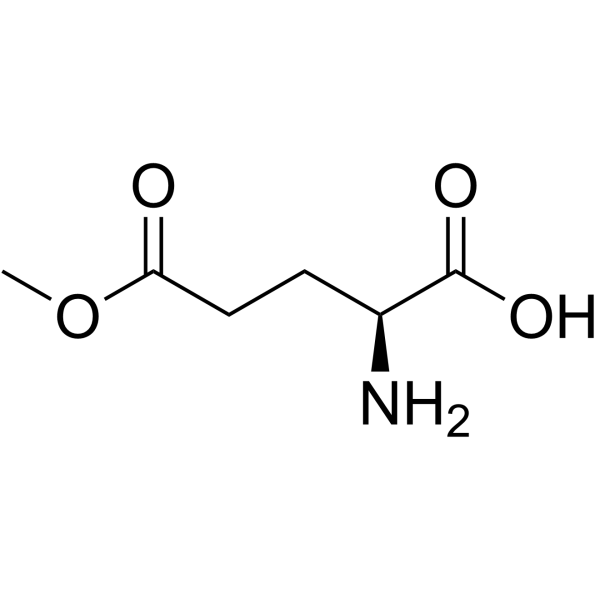
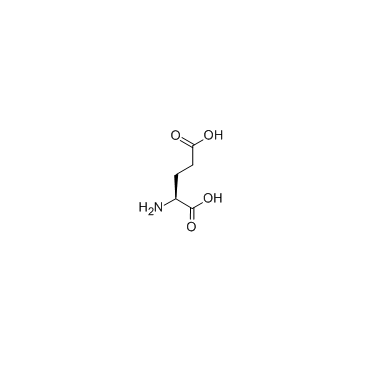
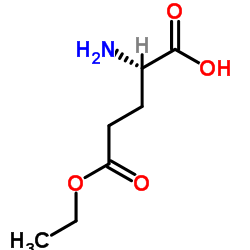
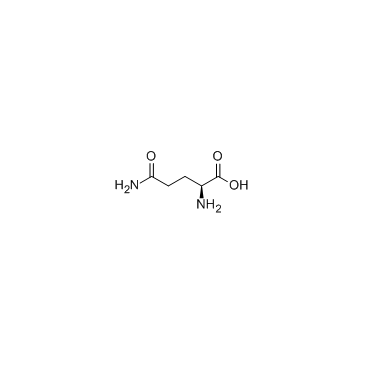 CAS#:56-85-9
CAS#:56-85-9